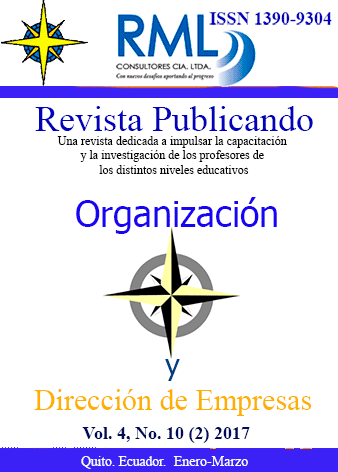Abstract
Cobit 5 - Control Objectives for Information and Related Technology - es una metodología de auditoría informática desarrollada por ISACA (ISACA, 2013) , este trabajo realiza un análisis de las diferentes aplicaciones en el ámbito de Gobierno y Gestión de las Tecnologías de Información TI, realizado por varios autores, entre estos el alcance que este marco de referencia tiene en las organizaciones, considerando el enfoque Fuzzy o enfoque Multicriterios para la Gobernabilidad de TI, previsto como temas que proponen datos más exactos para la precisión en la toma de decisiones, también se da una relación entre COBIT 5 (ISACA, 2013) y el modelo de capacidad de procesos de mejoras para el proceso de Gobierno de TI, y finalmente se analiza un Modelo Conceptual del Gobierno de TI utilizado para educación superior basado en el marco de COBIT 5 (ISACA, 2013) actividades de TI estén direccionados a la buena gobernanza.
References
Cobo A. Vanti A, R. R. (2014). A fuzzy multicriteria for it governance. En R. R. Cobo A. Vanti A, Journal of Information Systems and Tecnology Management (págs. 257 -276).
ISACA. (2013). Information Systems Audit and Control Association. En ISACA.
NUGROHO H. (2014). Conceptual model of it governance for higher education based en COBIT 5.
Pasquini A, G. E. (2013). COBIT 5 AND THE PROCESS CAPABILITY MODEL. En G. E. Pasquini A.
http://www.biblioteca.udep.edu.pe/bibvirudep/tesis/pdf/1_185_184_133_1746.pdf
You are free to:
Share — copy and redistribute the material in any medium or format.
Adapt — remix, transform, and build upon the material.
The licensor cannot revoke these freedoms as long as you follow the license terms.
Under the following terms:
Attribution — You must give appropriate credit, provide a link to the license, and indicate if changes were made. You may do so in any reasonable manner, but not in any way that suggests the licensor endorses you or your use.
NonCommercial — You may not use the material for commercial purposes.
ShareAlike — If you remix, transform, or build upon the material, you must distribute your contributions under the same license as the original.
No additional restrictions — You may not apply legal terms or technological measures that legally restrict others from doing anything the license permits.
